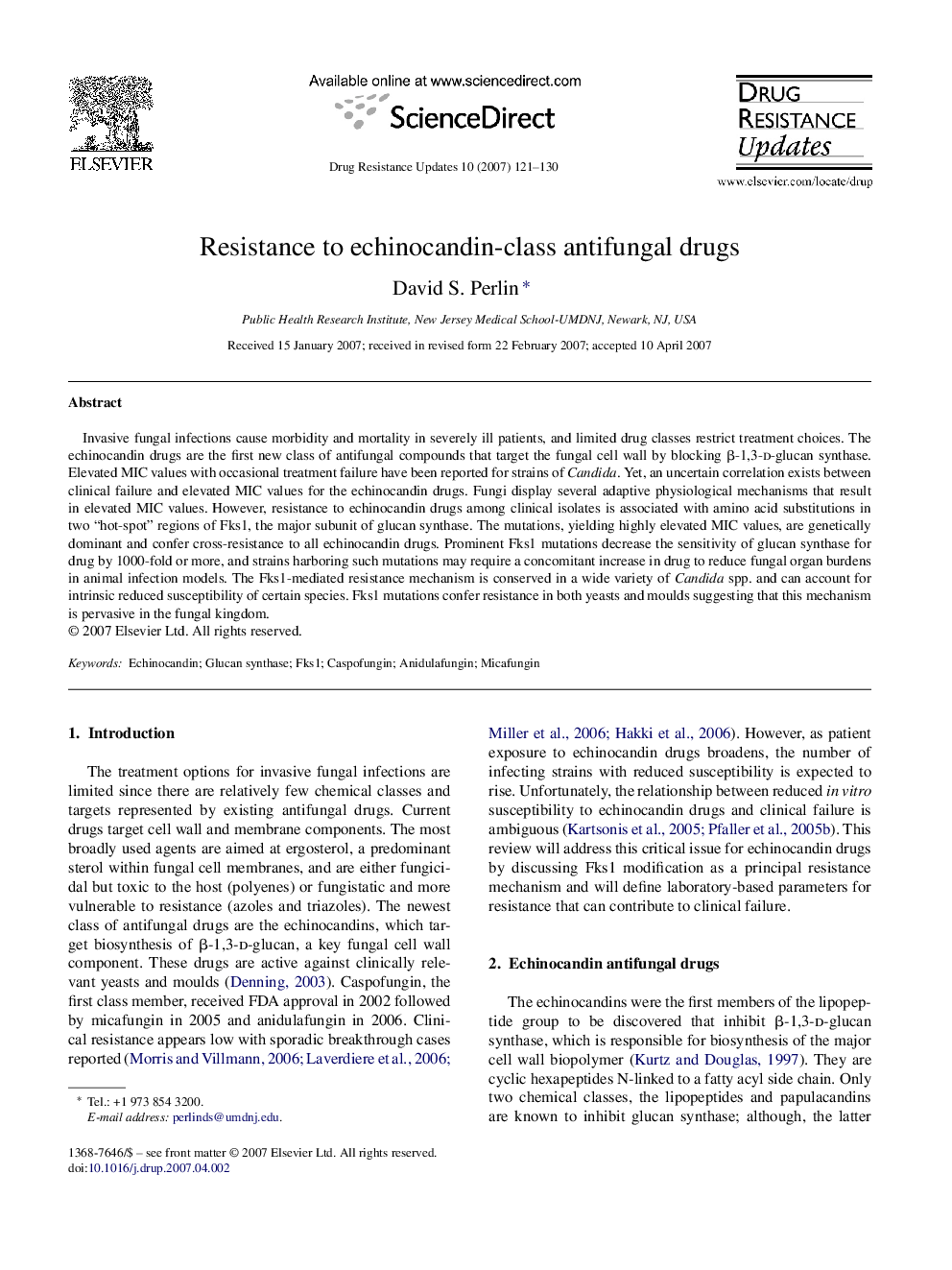| کد مقاله | کد نشریه | سال انتشار | مقاله انگلیسی | نسخه تمام متن |
|---|---|---|---|---|
| 2120549 | 1085709 | 2007 | 10 صفحه PDF | دانلود رایگان |

Invasive fungal infections cause morbidity and mortality in severely ill patients, and limited drug classes restrict treatment choices. The echinocandin drugs are the first new class of antifungal compounds that target the fungal cell wall by blocking β-1,3-d-glucan synthase. Elevated MIC values with occasional treatment failure have been reported for strains of Candida. Yet, an uncertain correlation exists between clinical failure and elevated MIC values for the echinocandin drugs. Fungi display several adaptive physiological mechanisms that result in elevated MIC values. However, resistance to echinocandin drugs among clinical isolates is associated with amino acid substitutions in two “hot-spot” regions of Fks1, the major subunit of glucan synthase. The mutations, yielding highly elevated MIC values, are genetically dominant and confer cross-resistance to all echinocandin drugs. Prominent Fks1 mutations decrease the sensitivity of glucan synthase for drug by 1000-fold or more, and strains harboring such mutations may require a concomitant increase in drug to reduce fungal organ burdens in animal infection models. The Fks1-mediated resistance mechanism is conserved in a wide variety of Candida spp. and can account for intrinsic reduced susceptibility of certain species. Fks1 mutations confer resistance in both yeasts and moulds suggesting that this mechanism is pervasive in the fungal kingdom.
Journal: Drug Resistance Updates - Volume 10, Issue 3, June 2007, Pages 121–130